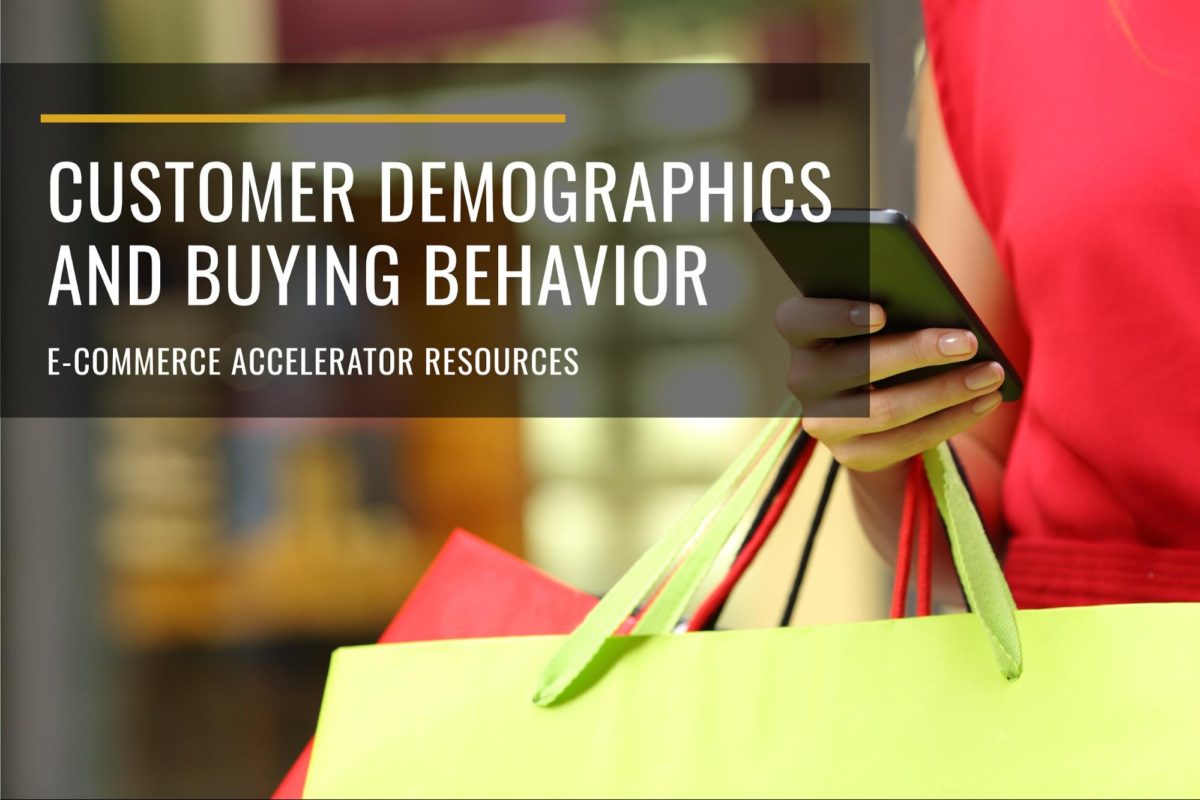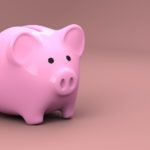
Video 8.0 Customer Demographics and Buying Behavior (Time 9.04)
For every SMB, understanding customer demographic and buyer behavior is crucial for growth.
Without this valuable information, you’ll be operating on guesswork and hunches alone; which may yield positive results some of the time, but not always.
On the other hand though, having a clear understanding of your target customer; and their buying behavior is the first step toward marketing success; your key to reaching your audience effectively.
In this guide we’ll take a look at how you can analyze your customer data, reading it so that you can turn it into useful information that can form the basis of your campaigns, content creation, marketing strategies, and more.
What Are Customer Demographics?
Okay, it might sound a bit technical but it’s not. Let’s dive right in.
Demographics is a scientific name for the study of people.
Defined by Merriam Webster as the ‘the characteristics of human populations (such as age or income) used especially to identify markets.’
From an advertising and marketing perspective, understanding your customer demographics can help you to supercharge your marketing by enabling you to identify and then connect with your potential customers or demographics.
There are really two steps to this process:
Step 1: Identify Your Customers – In this video we are going to talk mainly about using two new platforms to identify your customers, adding detail and nuance to your understanding through amazing new capabilities that you can now find online.
Step 2: Connect With Your Customers – Although I don’t cover this so much in the video, the entire purpose of customer demographics is to make customer acquisition and conversion more likely, so that you will gain a customer.
So first up, the big question: who are your customers?
Who Are Your Customers?
Even successful companies sometimes don’t have more than a general idea of who their customers are.
As markets only get more dynamic, more online-focussed and more competitive, this ‘general idea’ has to be turned on its head.
No longer can you say for example ‘our ideal customers are ‘women in their 30-40s’ or ‘men 55+.’ These classifications are simply the beginning. You need to know as much as possible about every existing customer and every potential customer.
That means making a science of what might have been a hobby previously: the art of customer identification.
You’ll require to understand and ideally create a database that will identify:
- Your customer’s buying behaviors
- Their online habits
- Their related purchasing behaviors
- Their media grazing and purchase information
- Their reading and hobbies
- Their social network profiles
And frankly every data point to identify a customer that you can find and collect. That requires systematic research and an approach to building your own data set, but it’s something that’s worth doing. In the end, the better you know your customer, the more effectively you’ll be able to reach them.
Find out how to create an avatar of YOUR customer.
Quick Steps to Customer Identification
So first, let’s start with your existing customer base. Do you have one?
Not all companies have a clear, clean customer identification program, so if you don’t, don’t worry, that is what we will help you do here.
Within our E-Commerce Accelerator program, we normally work with clients with a business value of a million dollars a year and above. Businesses of this size usually have a decent-sized mailing list, although there is stuff you can do to start growing your list; no matter what stage of the game you’re in.
- Get a Mailing List: Take your mailing list and add it into Facebook custom audience profile. Then mirror it, to get some demographics. Facebook has changed this a bit over the years. If you are interested in this strategy see my subsequent video and I’ll walk you through these steps.
- Use a Mailing List: One strategy for building customer profiles is by sending out surveys. One risk however, is that a lot of respondents to surveys answer the questions in ways that they think you want to hear, creating poor results. Still, surveys can be a good way to get a fine level of granular data about customers. Using email surveys, rather than a survey company – you rely on customers opening emails and that affects your response rates. To counteract these low response rates, I recommend a special offer in your survey email to entice respondents.
- Email Appending: This involves taking your customer list and running it through a program like TowerData or Clearbit.com to collect email addresses. These programs also allow you to enrich your data lists to obtain even more valuable information on your customers; just upload your email lists and they’ll get enriched with data points.
Customer Marketing and Identification Platforms
TowerData

(Source: TowerData)
TowerData is an email marketing platform that allows you to:
- Clean Your Emails and Improve Deliverability: Scrubbing your emails allows you to benefit from higher open rates, increasing the chances of more of your emails making it into your customer’s email boxes, rather than being flagged as spam.
- Get Valuable Data on Your Customers: TowerData gives you valuable insight into your customers, allowing you to learn more about who they are, what they’re interested in. This allows you to create campaigns and content that’ll resonate with them.
- Use Email Intelligence Tools: Personalize your email offers and segment your customers to get the best response rates.
See pricing information.
Clearbit

(Source: Clearbit)
Another useful tool is Clearbit. Clearbit uses machine learning and their own algorithms to update demographic data and customer identification data in real-time. They combine over 250 public and private data sources which feature millions of data points, to create a business intelligence resource that is up-to-date and powerful.

(Source: Clearbit)
Clearbit offers the latest Plug and Play email marketing platform. By syncing your website to Clearbit, you’ll immediately identify actionable data on who is visiting your site, will be able to design detailed customer purchasing profiles, and can start building new email lists and implementing email marketing campaigns.
See pricing information.
Using TowerData
Sign in to TowerData for a free trial. Then go to their home-page where you upload your customer profile.
Please note that the CSV file format is the only format TowerData accepts. Unfortunately, that means no TXT files. As one good alternative you can try is Amazon mailing list formats on TowerData.
Upload your CSV or Amazon email database into TowerData.
In the example on the video, I have taken one test mailing list and run it through the TowerData platform to show you how it looks.
I’ll use the example of a baby stroller marketing enquiry to demonstrate.
Now looking at the TowerData platforms we can see that the software is displaying a variety of marketing fields, demographic data, customer interest data, and purchase fields.
But what I’m really interested in is the TowerData ‘email intelligence’ field data. You will see how demographic data is structured into age, gender, household debt, as well as ‘Interest data’ on, purchase, age, and lifestyle categories.
This is where the rubber hits the road, as this is where you can find out and cross reference customer profiles which you can convert into gold.
What you’ll want to do is start looking for anomalies, or other significant items of interest.
So using the phrase ‘Active customer intelligence,’ we can look into the ‘baby stroller market. Once we have done some basic analysis, we can begin to see how the platform is really selling marketing or email lists based on the latest customer information.
As a way of searching for new insights into baby-stroller markets, look at customer behavior identified on the database. In this case, women shoppers who are interested in baby-clothes, which clearly links them to potential baby-stroller purchasers. Here you’ll find a list of email recipients who might be interested in baby strollers.
Through cross referencing these sales and customer insights we are looking for user profile information that features interesting patterns of purchase behavior that we can dovetail into our proposed marketing campaign.
Remember, we are looking at interest data and purchase data. The list on screen is weighted towards these interests because of my enquiry.
So looking at the TowerData list here, we can search the index for books purchased by these same customers. This reveals the type of books they buy, and you can define the search to include their interest and different media such as magazines.
In this case I can use the magazine purchasing data to see what types of magazines my business can use to advertise to this demographic. I can also use the data from this enquiry to write sales copy aimed at women who have interests in baby clothes and who read these books and magazines.
So I’m filling-out my knowledge of a customer market which may serve my advertising, marketing, and demographic research aims. That’s gold for a business.
On this mailing list we can see that 50-60% of purchasers are interested in deals, or discount mechanisms. So, that’s useful data to have to develop our sales strategy too.
We can conclude that great discount messages and promotional offers make a better pitch to this customer list.
This is the process that reveals value to your business. For example, when you download your Facebook contact data into TowerData and then run it through their survey application, you start to get a refined marketing email strategy and a customer contact program, based on what the audience already likes.
As an example. We know that 56% of this demographic is buying magazines. We can now send them out a survey, asking what their favorite magazines are, suggesting perhaps ten different magazine titles for them to select.
This becomes a starting point for a well-structured media campaign. We can broaden our survey questions to ask if there are related hobbies or magazines that this group enjoys, and then use the answers use to build further customer conversations and connections
If your email list is small, or out of date, we can take another approach.
Purchasing an email list is not such a problem today. In the past perhaps, but no longer.
Just go into your search engine and type in your keywords or market categories, and then add ‘email list’ to your search. There are lots of variations here, so be sure to search all keywords or phrases that define your business and then add ‘email append’ or ‘email list purchase.’
What you’ll find in searching, is that a lot of email marketing-lists or email database sales companies. Then you have to identify and use one or more, to build your marketing campaign.
Purchasing a database or email marketing contact list is really a good idea if:
- You don’t have your own list,
- You are launching a new product and you don’t have a good list, or
- You simply want to try something new, like a new message in a new media.
So you’ll have to do your own research into email list costing. Using our baby-stroller example, say towards expecting parents, or new parents.
There are lists for every market and these companies have to keep their data clean and fresh, by buying it off every source they can find continuously, to keep every data-point up to date.
Getting to Your Goals
You can start your journey into developing customer demographics and marketing your business fairly easily, using buyer behavior data.
This data is supplied both via paid platforms such as TowerData and Clearbit, while you can gather data yourself, or by buying email marketing lists from suppliers.
And, even if you’ve been in business for five or six years, this is still a really great exercise to go through. Because you’ll end up finding one or two nuggets of data, or marketing insights, that will allow you to get your business closer to your customers by understanding them better.
In the next video we are going to look at some pain-points in the customer purchase journey to help you boost your conversion rates. Stay tuned!






